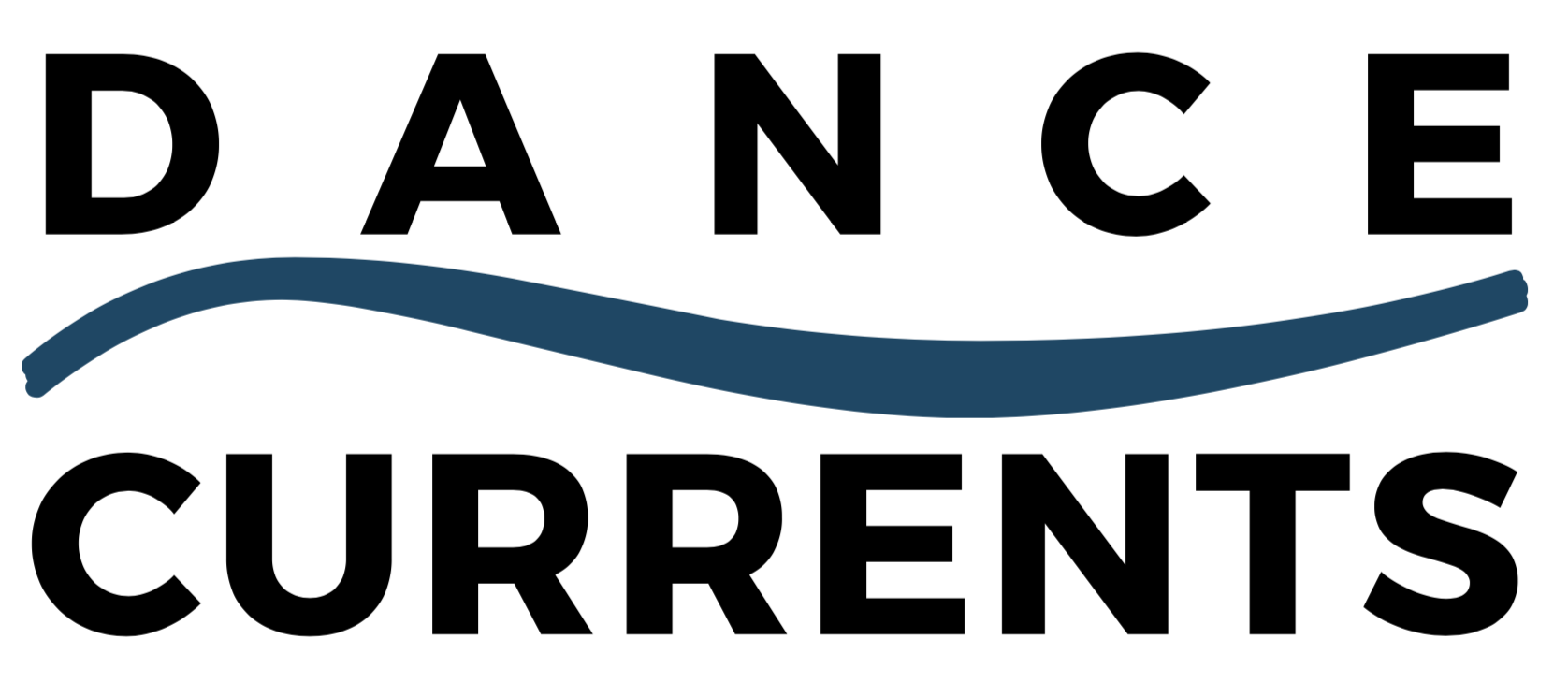Beth Corning enters and sits on a table, one of 10 or so dotting the stage at the New Hazlett Theater. She looks up…
So do I, marveling at dozens of white shoes suspended from the ceiling.
As the sound score begins throbbing, she initiates a slow table dance, her arms making a jigsaw journey similar to the maze-like Keith Haring pattern on her pants outfit. It’s black-and-white, just like the current socio-political environment.
She moves to a bench, speeding up, then ultimately back to her original table, where a disembodied male voice welcomes the audience back to The Other Shoe. It’s clearly out of sync in the program order, but then, Corning likes to keep her audience off kilter.
So already we understand a lot. And we soon find out that this is the ultimate pandemic dance with text, mostly in the form of questions, the kind we all asked ourselves over the past year and more.
By this time, Corning’s partner, Kay Cummings, takes to the upper level of the Hazlett balconies, microphone and papers in hand, with “something to tell.” She reveals that she “can’t convince anyone of anything anymore.” But she sounds like a Munchkin, her whimsy amplified as she scoots around on a tiny stool.
Yes, Corning is dipping into her trademark brand of dark humor. We see more tables, three each on those balconies above the stage. Of course, it’s a pointed reference to The Negotiating Table. Or Reaching Across the Table. Things that are a rarity these days.
The Other Shoe occupies our thoughts while we wait for the other Corning/Cummings shoe to drop. Their text was filled with common catchphrases like “my way” and “my freedom,” words that we encountered over and over in the media.
More fascinating is the black-and-white approach reflected in the evolving costume pieces. Corning and Cummings outfits, by Kristin McClain, are in reverse, down to the choice of shoes. They add and subtract jackets, a skirt and more. There are seven broad black-and-white stripes on the floor.
No gray to be seen so far.

Except in designing this pandemic potpourri of a performance. Both artists designed the words, with Cummings delivering much of it. Although it becomes a litany at one point, approaching an avalanche of questions, it also invariably must hit a personal note for every member of the audience along the way.
Corning conveyed solo movement by no less than four stellar choreographers, in order, Max Stone (Opening), Li Chiao-Ping (Shoeless), Martha Clarke (Pagliacci) and Donald Byrd (Rudderless Ship), all compelling in her hands. In particular, Clarke generally resides in left field, offering concepts that blindside the viewer, and this selection was no different. Corning’s solo, performed in a Pierrot-inspired clown costume, turned out to be a noisy surprise, where she wrestled with silver tubs and pails and one woven basket on her feet. Could it be that when we wrestle with our own egos, we can’t move forward and progress?
After listening to Cummings repeat words about her microphone and papers several times, we watched her do her final monologue while bits of shredded paper showered down, much like a snowfall. Instead of eating words, turn them into something beautiful?
The Other Shoe was remarkably seamless, given so many separate pieces. But then, if Corning is ever-so-curious, posing intriguingly layered questions through her art, she is also incredibly meticulous in presenting them in an intensely dramatic setting.
Perhaps both solos marked the realization that we have so much to offer…together. No, that’s too safe for Corning. If you were waiting for the other shoe to drop…just wait for it.



Recent Comments